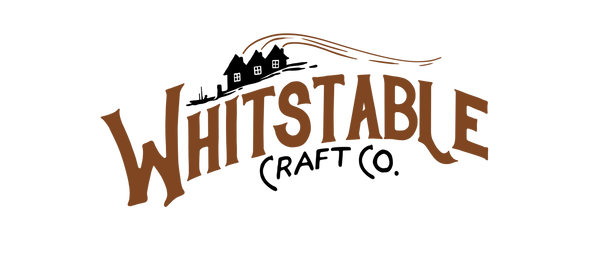The process
So you want to know how I actually make the wallets by hand? Well, let me show you.
First comes the leather. I buy the leather in 15 sq. ft hides. My favourites are Buttero leather from the Conceira Walpier Tannery in Italy, but I also love the wax pull up from Badalassi Carlo and the Pueblo leather from the same tannery. Each of these leathers come with different characteristics in texture, temper, colour and feel.
Buttero, which most of my wallets are made with, is a medium-firm temper, vegetable tanned, full grain leather from Italy.
Cutting

I’ll take my hide and cut out what I need based on my pattern (the design I’ve made and printed out on card). I’ll then trace around the card to get exact measurements.
From then comes the crucial part. Cutting out the shape. This is the bit I need to be most precise with, because even if I’m off by 1mm, it could ruin the entire piece.
I cut using a normal craft knife that you’d find in most hobby stores. I use a Westcott cork backed ruler to make sure my lines are straight and it doesn’t slip on the leather.
Burnishing stage 1

Burnishing is the process of “sealing” the fibres of the leather to give a nice smooth finish. Before I start to prepare the rest of the pieces, I start to burnish the edges of the pockets. This is usually just one layer of leather.
I first use my bevelling tool which removes the sharp edge from the layer of leather and then apply a layer of Tokonole (burnishing agent) which I then rub down with a canvas cloth. This creates friction which melts down those edges into a beautifully smooth finish (instead of the raw, rough leather fibres).
Constructing

We now construct all the pieces, which usually involves lots of glueing. For my wraparound designs which are a single piece of leather, I glue, fold, dry, glue, fold and so on.
This is actually a surprisingly fiddly part of the process as you have to make sure the pieces line up perfectly. I use a water-based glue and a brush to lay down the glue on the leather and rough up the grain side with a craft knife (or the glue won’t adhere).
I’ll wait 10-20 minutes for the glue to dry before moving onto the next step.
Sanding stage 1
Sanding the glued edges gets rid of any excess glue and makes sure the edges are nice and straight. I start with 100 grit and get to work. Moving up until I’m happy.
I’ll bevel the edges again before I start the sewing.
Stitching

Stitching is my favourite part by far. I just find it very therapuetic. But before I can lay down any stitches, I need to punch my stitching holes.
For this I mark using a wing divider 0.4mm from the edges, then punch my holes using my Sinabroks tool. I have this cool marble slab and punch pad which saves my cutting mat and also dampens the sound.
I can then prepare my thread (0.65m Amy Roke polyester) and get to work. I use a traditional saddle stitch, which uses a single thread but it’s looped into two. Meaning you have two threads crossing over each other, giving you double the strength in the stitching.
I’ll stitch the seam, cut the thread and melt the end to finish.
Finishing
We’re almost there. From here I go down to 400 and 500 grit sandpaper to make sure those edges are just right.

Our wallet is ready to go. I just need to seal off those edges to make sure they are smooth and shiny. I get out my Tokonole and canvas rag and start rubbing. Lots of friction to melt down those fibres into a perfect finish.
Send it to you!

And we’re done! The final step is to add the packaging, place it into the shipping envelope and send out to you. You’ll now have a handmade product with you for the rest of your life - and I can’t wait to hear more about the journey it goes on with you.
